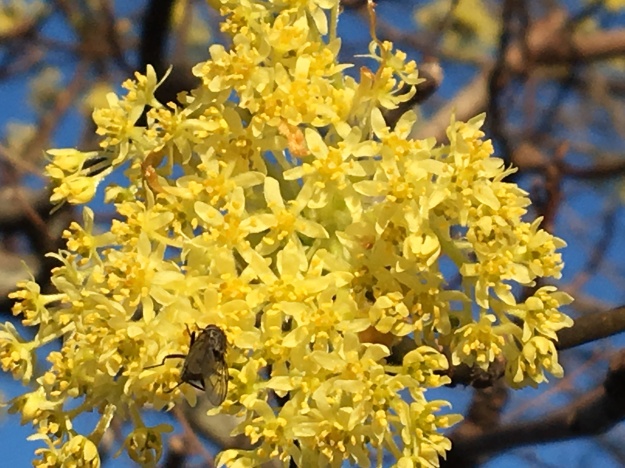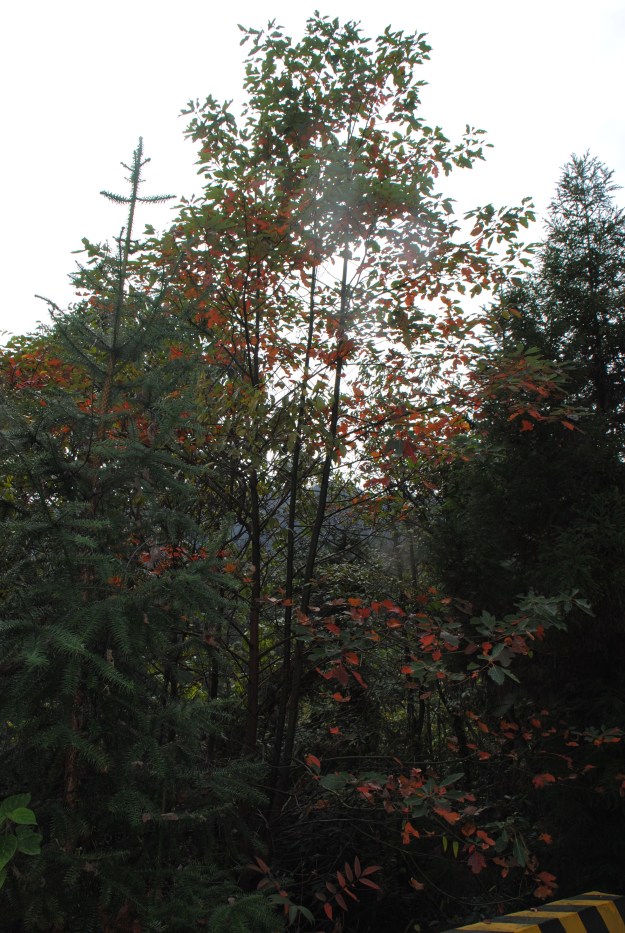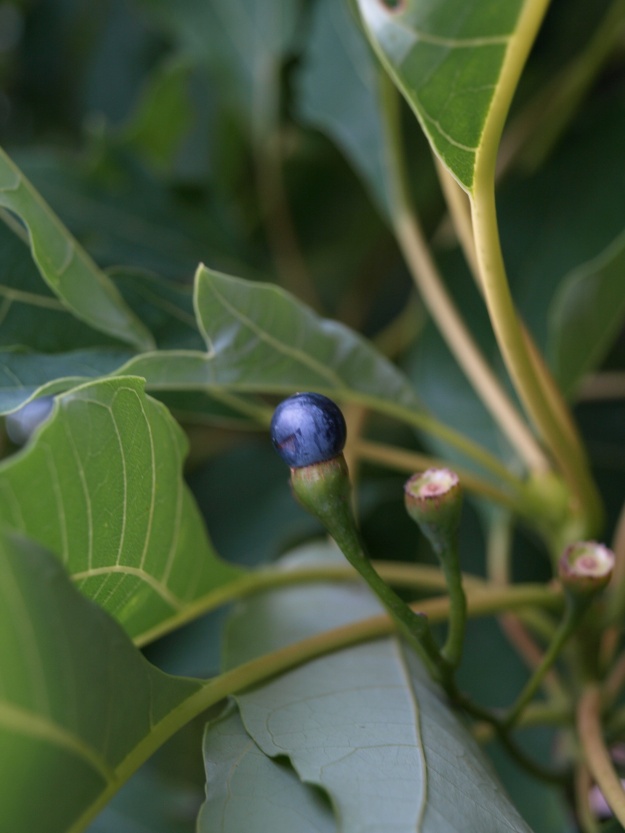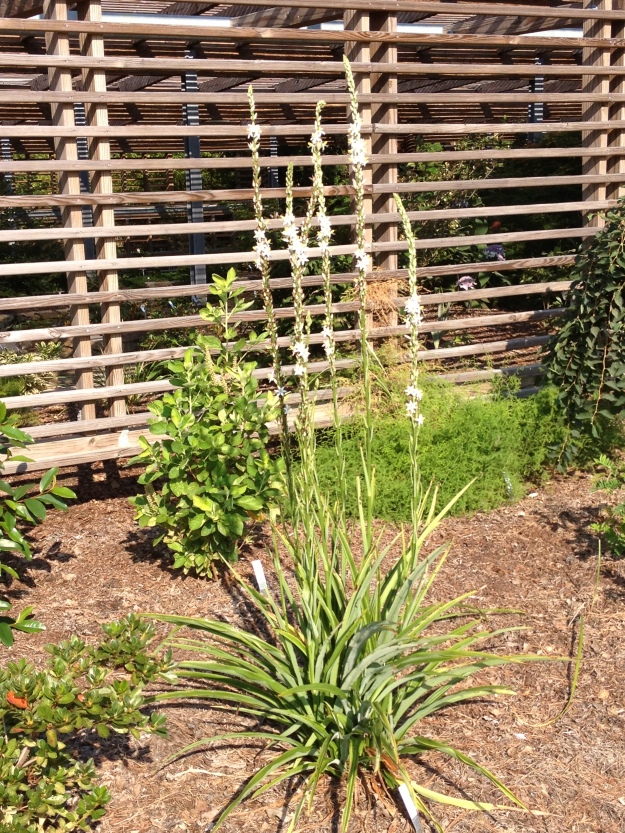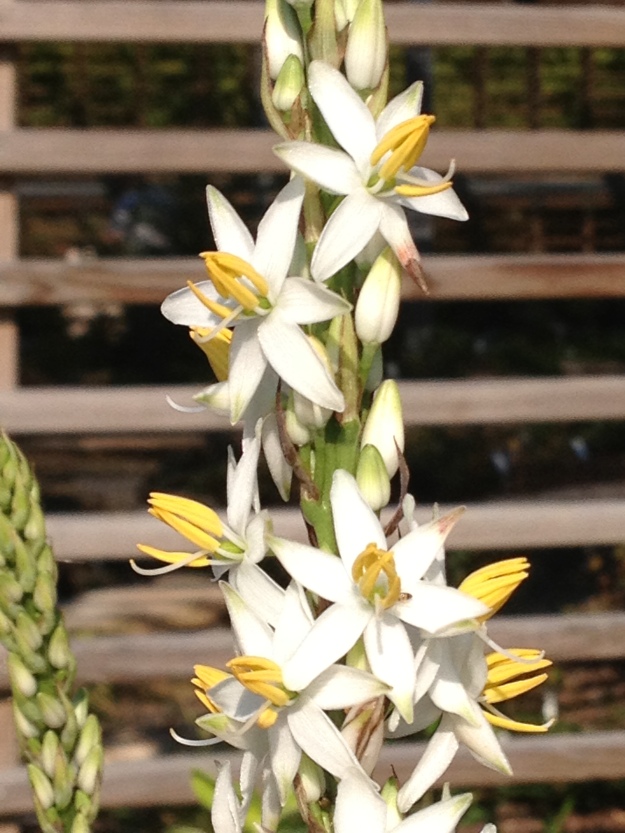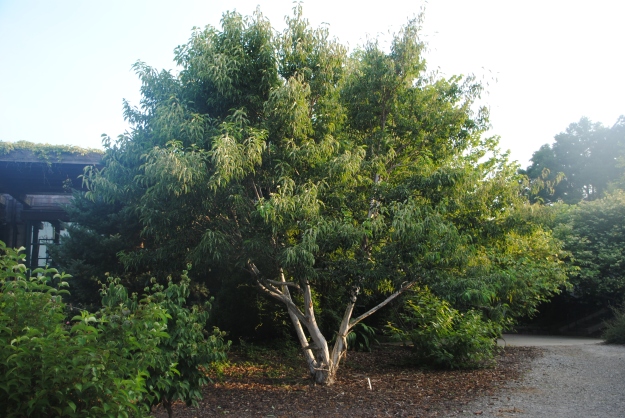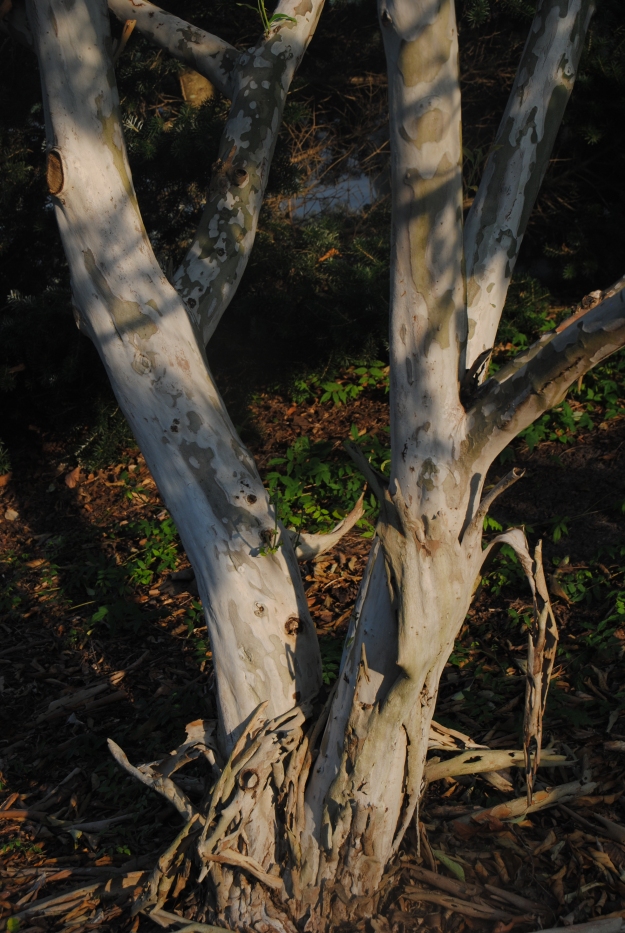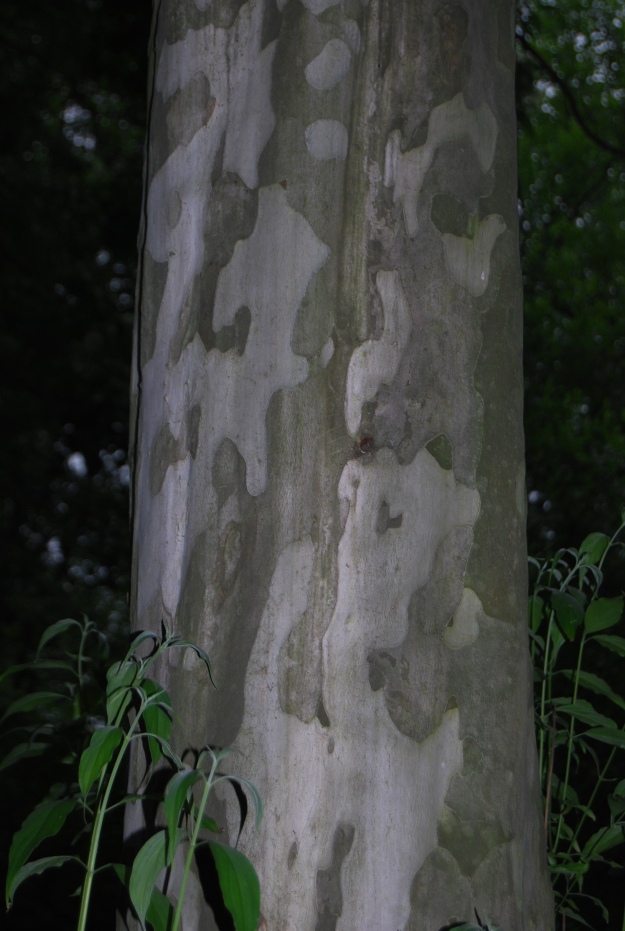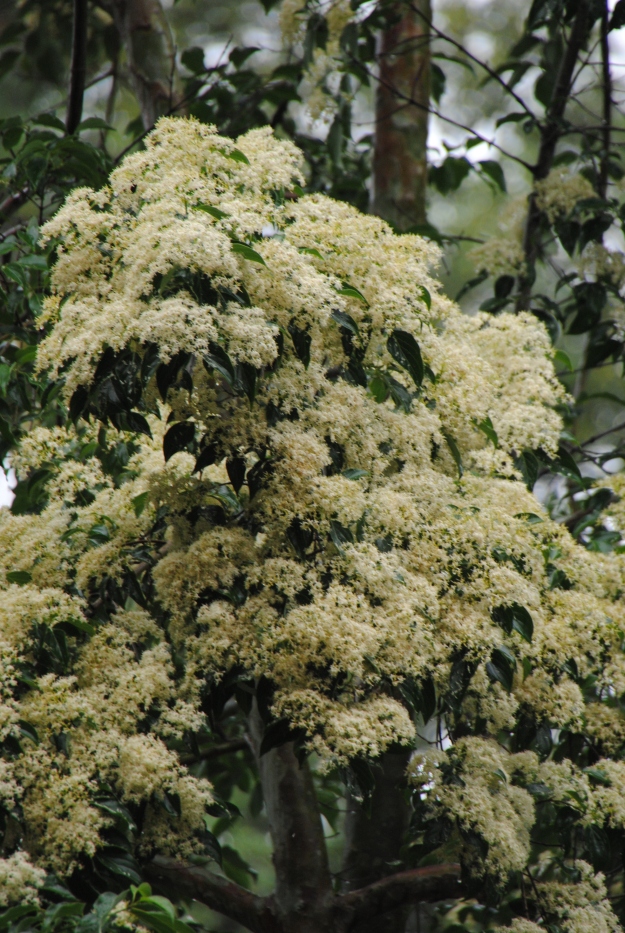
A selection of almost 80 Aucuba from the JC Raulston Arboretum to be displayed at the NCNLA Winter Trade Show.
I like to think of Aucuba japonica as the Rodney Dangerfield of plants. Despite a long history of success in the garden, it still just gets no respect. In fact, at a recent international meeting when I mentioned that the JC Raulston Arboretum was developing a significant collection a woman from the UK good-naturedly called it a parking lot plant while folks from various other countries nodded in agreement. Since only the toughest of plants can grow around parking lots I consider that as a mark in favor of the plant and not a knock against it.

Aucuba chlorescens has conspicuously bullate foliage and is found in northern Vietnam and Yunnan.
Aucuba has traditionally been placed within the dogwood (Cornaceae) family but in a rare show of respect has also been occasionally placed in its own family, Aucubaceae. Most recent treatments including the Angiosperm Phylogeny Working Group have grouped Aucuba with Garrya in the Garryaceae family. Aucuba is a group of about 10 or more species although the genus is still in some flux and there is likely several as yet unnamed species. All the members of the genus are evergreen trees or shrubs with separate male and female plants. Both sexes are generally necessary for fruit production on the females but there are a few selections of Aucuba japonica which will often fruit without a male nearby. Interestingly, there is a very long period – often several weeks – between pollination and actual fertilization in the genus.

Showy fruit on a green leaf female aucuba.
John Graeffer first intoduced the Japanese aucuba (A. japonica) to the west in 1783. It represents one of the rare occasions when a variegated form of the species is introduced before the non-variegated type. His introduction, ‘Variegata’, was the typical spotted “gold dust” plant that is still so common in the south. Although the introduction was a female, it was not until a male was introduced over half a century later that the ornamental value of the fruit was known in Europe.

Male flowers are easily identifiable on Aucuba japonica with their 4 yellow stamens.
W.J. Bean in his excellent Trees and Shrubs Hardy in the British Isles (2nd ed.) in 1916 has nothing but positive things to say about Aucuba japonica and noted that it was valuable for its tolerance to the dry shade found under lindens, horsechestnuts, and beech. By the 1976 revised 8th edition of the classic reference book it was noted that Japanese aucuba was also quite tolerant of urban conditions including smoke and other air pollution but the intervening 60 years between these 2 editions necessitated the comment “Today the aucubas… are out of favor, but the pendulum has swung too far.” The pendulum has never really swung back though and while many thousands of aucuba are produced and sold each year they are still considered a somewhat plebian plant perhaps simply for growing so easily.
Aucuba japonica makes an evergreen shrub to about 8’ tall if left unchecked. In the wild it can be found both as a solid green-leaf plant or speckled with gold. The glossy thick-textured leaves are held opposite on the stems and leave conspicuous leaf scars after they fall. The upright rounded form is made up of a many erect, often little branched stems which are typically quite thick, smooth, and bright green. Male plants bear terminal spikes of burgundy flowers in early spring which are quite attractive on close examination but won’t stop a car driving by. Female flowers are somewhat less showy and are carried in the leaf axils. The bright red fruits ripen in the fall and stay showy often through the winter and into spring.

An impressive collection of aucuba in Japan at Garden Kinosata
The JCRA has begun accumulating aucuba in earnest and now has about 95 selections and species. There are likely duplicates since many Japanese selections have been re-named over the years and much confusion exists in the literature. We have propagated most of our collection and plan to plant them out together in order to compare them side by side for variegation, growth habit, and fruiting show. Over time, we hope to clear up some of the confusion that currently exists and select the best of the bunch for promotion.
Aucuba, especially A. japonica, are easy to grow and as noted tolerate dry shade, pollution, and significant root competition from larger trees. Female selections will fruit best if planted in a relatively bright spot with male forms nearby. They will grow in full sun situations but will often have a somewhat washed-out appearance and are really at their best with some protection from harsh afternoon sun. Aucuba are easy to propagate from cuttings at almost any time of year from softwood or hardwood cuttings and will form thick vigorous roots often within a week of being stuck.
There is a canker that can affect aucuba especially in overly wet locations. It girdles the stems and will turn entire branches and occasionally the whole plant black. When this dieback is first noticed, all affected parts should be pruned back well into healthy wood. The pruners used should be sterilized with a 10% bleach solution after each cut to avoid spreading the disease. Severely affected plants should be removed, bagged, and thrown away to prevent becoming a source for infection of other aucuba nearby.
A few selections of Japanese aucuba that have impressed us in recent years include:
‘Hosoba Hoshifu’ – A form with yellow spotted, narrow leaves. This selection has exceptionally glossy foliage and bright red fruits. In a group that often looks interchangeable, this form really stands out.
‘Ooba Nakafu’ – This form has huge leaves with a bright gold center. In heavy shade, the gold fades to a pale green but is still quite attractive. We expect this to become a fairly large plant.

‘Hime Kikufurin’ – This form has a bright gold margin to the leaf that is much deeper in color than some of the older selections. It should ultimately be somewhat smaller than the similar ‘Limbata’. So far it has held this color quite well even in deep shade.
‘Natsu-no-kumo’ – This is a patented selection discovered by the Japanese plantsman Seiju Yamaguchi. The new growth emerges pure white in spring before turning green. A full size plant is quite a sight in the garden.
‘Daisuke’s Tiger’ – This is mostly gold around the margins and tips and spotted with green while the green centers are speckled with gold. Quite a distinctive plant discovered by Daisuke Muramatsu in Japan and introduced by Asiatica Nursery.




